China # 8 – Jiayguan -The Western End of the Great Wall – September 2014
It was late when we wound our way through the dark streets of Jiayuguan (Gansu Province) to find the official end of The Great Wall of China. A really full moon, the biggest and roundest of the year called Harvest Moon, lit the way as we arrived at an empty parking lot with a sign to the Great Wall entrance, a perfect place for Green to set up her tent. A little store was just about to close but we managed to grab a couple of cold beers. In the morning, a few vegetable and fruit vendors had set out their offerings.
The Great Wall of China
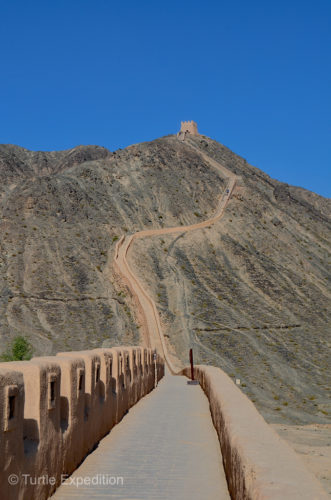
No matter how many photos you have seen, standing on the Great Wall of China is an original experience.
The Great Wall was an elaborate military defense system, including forts, platforms and watchtowers. Started in the 7th century, it eventually stretched 21,196 kilometers, (13,170 miles), across 15 modernnprovinces of today’s China. It has lasted over 2,000 years and is considered one of the greatest cultural and architectural miracles in the history of world civilization. Building materials varied according to topography and what was available. Wood, brick, stone and sometimes just willow twigs were inserted into layers of coarse clay. Natural cliffs were incorporated. Of course, one of the principal functions of the Wall was to protect the Western border of the Chinese Empire and the caravans traveling along the Silk Road.
As we started up the Wall to the top, we were counting steps. I think I lost count after about 500. From the watchtowers it would be easy to see invaders many miles away especially in ancient times without smog. At the very end of this restored section, actually a rock ridge, peak-bagger Monika climbed to the top. Lovers sealed their vows with a small padlock on the chain handrail and presumably threw the keys into the canyon below. There was thankfully an easier way down, following a long winding flagstone path.
Military fortress at Jiayu Pass

Leaving the West Gate entrance, the caravans headed for the treacherous Gobi and Taklamakan Deserts.
The large fortress protecting Jiayu Pass was built near Jiayuguan, a small town that became a prosperous center for the production of silk. At the large parking lot at the entrance of these historic grounds we quickly learned to always bring our passports as the folks at ticket counters and later security guards inspected them. First we visited the informative museum before walking up more stairs to the actual fortress. It encompasses 40’100 square yards (33,529 m2) and had a complex defensive system with an inner city with two gates, a central area with many buildings including pretty temples with fierce looking monster guardians, an outer city with two more gates, and finally a moat. Along the walls were watchtowers, turrets and cannons.
Last Outpost before the treacherous Gobi and Taklamakan Deserts

We would see the Great Wall of China two more times before our wheels touched the Yellow Sea of the Pacific Ocean.
Caravans coming from all four directions stopped here to trade. The General’s Fortress (as it is sometimes called) was the last outpost of the Chinese Empire for anyone heading west along the treacherous Gobi and Taklamakan deserts of the Silk Road. What trepidations they must have had leaving this haven! And what a relief others must have felt arriving safely after months of hardship and worries. Just having driven through those two treacherous deserts in a modern expedition truck with air conditioning we were in awe as we walked through the thick tunnel wall to see nothing but waterless wasteland. Camels were waiting for (tourist) cargo. One could only imagine the sounds and smells of the masses of men and animals in the mist of bartering and exchange of goods, news and ideas.
- In the morning, a few local vendors were offering fresh vegetables and fruits.
- We took the opportunity to pick up some supplies for the road.
- We were pleasantly surprised by the beautiful gardens.
- Boy, that’s a long ways up to that watchtower!
- Yes, I counted the steps but lost the count around 500.
- Monika’s log says we climbed 535 steps.
- Climbing up into the various watchtowers on the Wall gave some impressive views for miles around. This is Trump’s dream!!
- Approaching the watchtower.
- It took many year to wear out these steps.
- I’m almost there!
- The end of the Great Wall on this restored section perched on a rock ridge would stop any invading army.
- We were walking on only a small portion of The Great Wall of China which has a total length of 21,196 kilometers, (13,170 miles) Trump’s “big beautiful wall” will have a maximum length of 2,000 miles (3,200 kilometers) along America’s southern border.
- Monika is determined to get to the very edge of the western end of the Great Wall.
- Peak-bagger Monika climbed to the top. Why not?
- Lovers sealed their vows with a small padlock on the chain handrail, and presumably threw the keys into the canyon below.
- Thankfully, there was an easier way down on a long winding flagstone path.
- Beautiful statues paid tribute to the caravans and the military who protected them.
- Was this Marco Polo?
- Or this?
- This lifelike caravan of camels lets tourists better imagine how it must have looked like during the Silk Road years.
- Entrance to the museum.
- Who needs AK47s. These solders were not trained to just wound the enemy.
- The museum had some interesting examples of weapons used perhaps 1,000 years ago.
- I think they did not want anyone to sit or stand here.
- We wondered if this could have been Marco Polo himself and he followed the Silk Road.
- Life-size figures gave us a feeling of how people really looked centuries ago.
- Inside the Jiayuguan fortress were many beautiful buildings and temples.
- Statues of guardian lions traditionally stand in front of Imperial palaces, temples and other important buildings.
- The architecture, statues, adornments and care of details in this temple were exquisite.
- Tile details were quite impressive.
- An offering in a temple.
- The temple guards looked fierce enough to ward off any intruders.
- In other words, no graffiti and do not pee on the walls (because they erode!).
- Building materials varied according to topography and what was available. Wood, brick, stone and sometimes just willow twigs were inserted into layers of coarse clay.
- Standing on top of the Jiayuguan Fortress, the Great Wall stretched into the horizon.
- We could only imagine the hectic scene inside a thousand years ago.
- The Western Gate Tower at the Jiayun Fortress was quite impressive.
- Leaving the West Gate entrance, the caravans headed for the treacherous Gobi and Taklamakan Deserts.
- Heading out of the Western Gate into the Gobi desert.
- Camel waiting for cargo.
- Green, our guide, was excited to show us her country. She was an avid photographer herself and some of these photos are hers. Her correct Chinese name is Zhang Zhi Qiong. “Green” is definitely easier to remember.




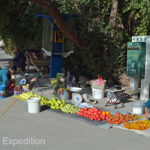






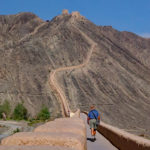



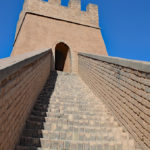
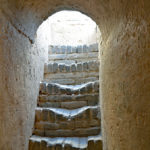

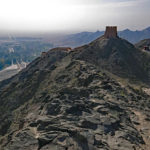










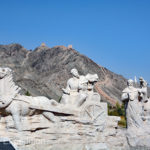

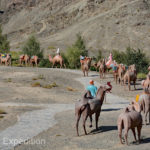



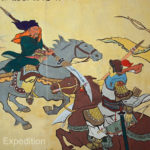



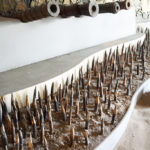





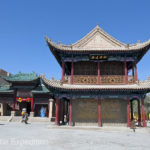


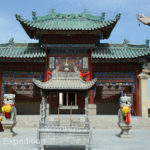
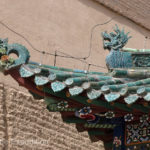
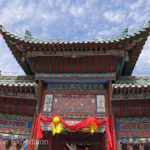
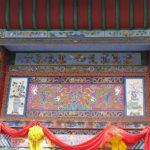




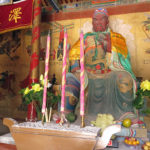
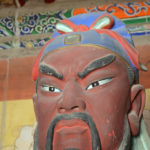




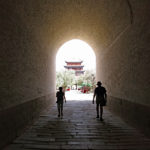

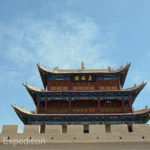
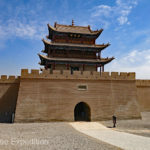




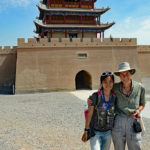





Amazing pics..feels like you brought me with you.
Thanks. Happy to see you are reading our blogs.